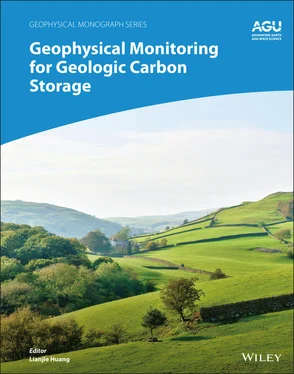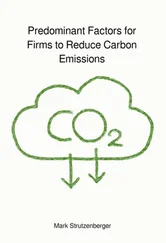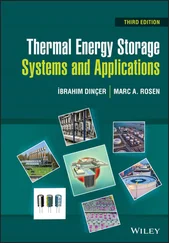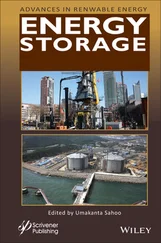Geophysical Monitoring for Geologic Carbon Storage
Здесь есть возможность читать онлайн «Geophysical Monitoring for Geologic Carbon Storage» — ознакомительный отрывок электронной книги совершенно бесплатно, а после прочтения отрывка купить полную версию. В некоторых случаях можно слушать аудио, скачать через торрент в формате fb2 и присутствует краткое содержание. Жанр: unrecognised, на английском языке. Описание произведения, (предисловие) а так же отзывы посетителей доступны на портале библиотеки ЛибКат.
- Название:Geophysical Monitoring for Geologic Carbon Storage
- Автор:
- Жанр:
- Год:неизвестен
- ISBN:нет данных
- Рейтинг книги:4 / 5. Голосов: 1
-
Избранное:Добавить в избранное
- Отзывы:
-
Ваша оценка:
- 80
- 1
- 2
- 3
- 4
- 5
Geophysical Monitoring for Geologic Carbon Storage: краткое содержание, описание и аннотация
Предлагаем к чтению аннотацию, описание, краткое содержание или предисловие (зависит от того, что написал сам автор книги «Geophysical Monitoring for Geologic Carbon Storage»). Если вы не нашли необходимую информацию о книге — напишите в комментариях, мы постараемся отыскать её.
Geophysical Monitoring for Geologic Carbon Storage
Volume highlights include: Geophysical Monitoring for Geologic Carbon Storage
The American Geophysical Union promotes discovery in Earth and space science for the benefit of humanity. Its publications disseminate scientific knowledge and provide resources for researchers, students, and professionals.
Geophysical Monitoring for Geologic Carbon Storage — читать онлайн ознакомительный отрывок
Ниже представлен текст книги, разбитый по страницам. Система сохранения места последней прочитанной страницы, позволяет с удобством читать онлайн бесплатно книгу «Geophysical Monitoring for Geologic Carbon Storage», без необходимости каждый раз заново искать на чём Вы остановились. Поставьте закладку, и сможете в любой момент перейти на страницу, на которой закончили чтение.
Интервал:
Закладка:
I thank all the authors for their contributions and numerous reviewers for their careful review of the chapter manuscripts. Appreciation also goes to AGU and Wiley for their support during the preparation and production of this book. Particularly, I thank Dr. Estella Atekwana from the AGU Books Editorial Board and the AGU Publications Director, Dr. Jenny Lunn, for helpful feedback on the manuscript. I also express gratitude to staff at Wiley, including Dr. Rituparna Bose, Emily Bae, Kathryn Corcoran, Poornima Devi, Layla Harden, Karthiga Mani, Nithya Sechin, Bobby Kilshaw, Carol Kromminga, Angela Cohen, Shiji Sreejish, and Bhavani Ganesh Kumar for their support.
Lianjie Huang Los Alamos National Laboratory , USA
1 Evaluating Different Geophysical Monitoring Techniques for Geological Carbon Storage
Lianjie Huang1 and Xianjin Yang2
1 Geophysics Group, Los Alamos National Laboratory, Los Alamos, New Mexico, USA
2 Atmospheric, Earth, and Energy Division, Lawrence Livermore National Laboratory, Livermore, California, USA
ABSTRACT
Various geophysical techniques can be used to monitor geologic carbon storage and ensure that it is safe in the long term. Seismic methods are often used to monitor CO 2migration in the deep regions of a geologic carbon storage site while nonseismic methods provide complementary monitoring from shallow subsurface to the surface. This chapter gives an overview of the geophysical monitoring methods presented in this book including Interferometric Synthetic Aperture Radar (InSAR), frequency modulated spectroscopy, induced microseismic monitoring, time‐lapse active seismic monitoring, gravity, electrical and electromagnetic techniques, controlled‐source electromagnetic method, electrical resistivity tomography (ERT), and self‐potential measurements.
1.1. INTRODUCTION
Geologic carbon storage, or geologic carbon sequestration, is an emerging technology to permanently store or sequester separated and captured anthropogenic carbon dioxide (CO 2) from industrial sources into deep geologic formations. Some large‐scale anthropogenic CO 2sources include coal‐fired or gas‐fired power plants, oil and gas refineries, steel mills, and cement plants. The purpose of geologic carbon storage is to mitigate the rising CO 2concentration in Earth's atmosphere and to substantially reduce its impact on the global warming.
Geophysical monitoring is crucial for ensuring safe, long‐term geologic carbon storage. A geologic carbon storage project requires site characterization before CO 2injection to evaluate if the site is suitable for geologic carbon storage, and monitoring of CO 2migration during and after CO 2injection. Various geophysical monitoring techniques can remotely track subsurface CO 2plumes and provide crucial information to mitigate potential leakage risks. A geologic carbon storage project should integrate complementary geophysical monitoring techniques to form a comprehensive monitoring plan because various geophysical monitoring techniques have their own advantages and limitations. Joint analyses of information from different geophysical monitoring techniques can increase the monitoring confidence. Monitoring plans must be adaptable during different phases of a geologic carbon storage project from site characterization to injection to postinjection site care. The type of monitoring technique that should be deployed also depends on the monitoring targets, such as the atmosphere, drinking water aquifers, cap rock, and storage formation.
This book provides a comprehensive reference to different geophysical techniques currently used and being developed for monitoring geologic carbon storage, and assesses their advantages and limitations. Part Iintroduces two techniques for geodetic and surface monitoring. Part IIis on subsurface monitoring using seismic techniques. Part IIIfocuses on subsurface monitoring using nonseismic techniques. Part IVpresents five case studies of geophysical monitoring at different worldwide geologic carbon storage sites.
The field of geophysical monitoring for geologic carbon storage is rapidly growing. Many new technologies are being developed. This book does not aim to include all possible geophysical monitoring technologies but rather presents an overview of current techniques and their applications, drawing on examples from geologic carbon storage sites across the world.
1.2. GEODETIC AND SURFACE MONITORING
Geodetic monitoring, including global positioning system (GPS) monitoring, tilt and Interferometric Synthetic Aperture Radar (InSAR), measures displacements and strains, both on the surface and within the interior of the Earth. Space‐based InSAR is perhaps the most cost‐effective geodetic technique for remote monitoring of land‐based geologic carbon storage sites.
CO 2injection might cause Earth's surface to deform. Geodetic monitoring is a cost‐effective approach to monitoring reservoir integrity and detecting possible CO 2leakage. The technique involves repeated measurements of the deformation of Earth's surface. In Chapter 2, Vasco et al. present a geodetic monitoring technique using InSAR. InSAR, which provides high spatial resolution and broad surface coverage, is particularly suitable for monitoring large‐scale geologic carbon storage. Multi‐temporal analysis can improve the accuracy of surface displacement measurements. Data interpretation and inversion techniques may be used to relate the observed surface displacements to the CO 2injection‐induced volume change at depth. Some advantages of geodetic monitoring include: (1) observations are usually frequent in time, from every few minutes to every few months; (2) geodetic measurements are often conducted remotely, simplifying data collection and enabling cost‐effective monitoring; (3) geodetic observations are sensitive to fluid volume and pressure changes associated with geologic carbon storage; and (4) geodetic monitoring may be able to detect CO 2leakage and the upward migration of fluid under pressure because the magnitude of surface displacement increases dramatically when the fluid‐injection‐induced deformation approaches the surface. InSAR monitoring has been successfully used at a gas storage site at In Salah, Algeria, where it has been determined that the flow in the reservoir was influenced by large‐scale fault/fracture zones. InSAR monitoring at the Aquistore CO 2storage project in Canada and the Illinois Basin Decatur Project in the United States indicates no major surface deformation that might be attributed to stored carbon dioxide. InSAR can possibly monitor ground deformation with an accuracy of 0.5 cm. InSAR data quality may be compromised by diverse land surface environments and unfavorable site conditions, such as mining and construction activities, groundwater recharge, swelling clays, and slope instabilities.
Surface monitoring is used to detect CO 2on the surface when some of the injected CO 2migrates to the surface. Most surface monitoring techniques involve monitoring absolute changes in bulk CO 2concentration, which is complicated by the diurnal cycle. In Chapter 3, Clegg et al. present a surface monitoring technique using frequency modulated spectroscopy, which uses changes in the carbon stable isotope ratio in CO 2to distinguish anthropogenic and natural CO 2. Passive and active absorption spectroscopy can measure the absolute concentration of atmospheric CO 2and derive seepage from the sequestration site using changes from the background diurnal concentrations. Absorption spectroscopy has the advantage of both point source in situ analysis and wide area remote analysis of the area above a geologic carbon storage site.
1.3. SUBSURFACE SEISMIC MONITORING
Интервал:
Закладка:
Похожие книги на «Geophysical Monitoring for Geologic Carbon Storage»
Представляем Вашему вниманию похожие книги на «Geophysical Monitoring for Geologic Carbon Storage» списком для выбора. Мы отобрали схожую по названию и смыслу литературу в надежде предоставить читателям больше вариантов отыскать новые, интересные, ещё непрочитанные произведения.
Обсуждение, отзывы о книге «Geophysical Monitoring for Geologic Carbon Storage» и просто собственные мнения читателей. Оставьте ваши комментарии, напишите, что Вы думаете о произведении, его смысле или главных героях. Укажите что конкретно понравилось, а что нет, и почему Вы так считаете.












